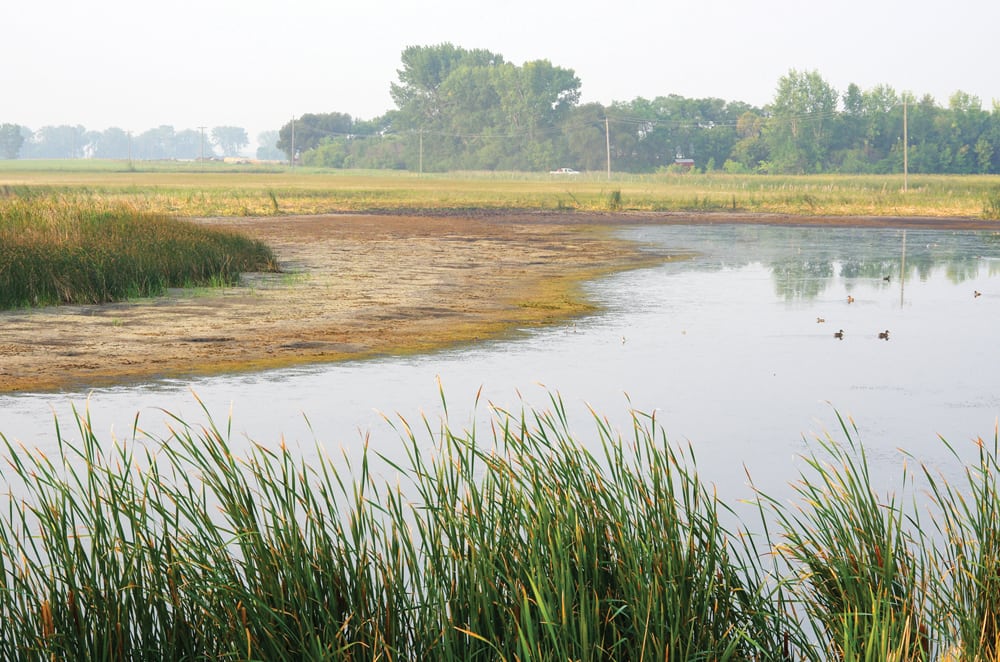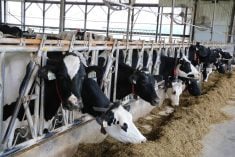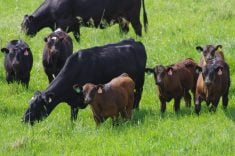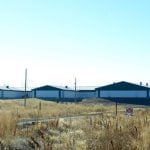Most of Manitoba is dry for the second year running, but is it a drought?
The term fits, according to AAFC. The agency’s national drought monitor says most of eastern Manitoba and the Interlake is in moderate or severe drought, along with land stretching through southern Manitoba from the Ontario border and well into Westman. A ring around those areas, including a buffer along the U.S.-Canada border, is abnormally dry, but doesn’t make the cut for “drought.”
The province, however, is shying away from the term, and phrases like “drought-like” or just “dry” have been used to sidestep the issue both from government, industry groups and media.
“I would say no, I would not call it a drought. I’d call it climate change,” Manitoba Agriculture Minister Ralph Eichler said. “We’ve seen wheat yields right into the mid-80s (bushels an acre), which is unbelievable for this time of year. We’ve seen some wheat at 30 and 40 (bushels an acre) too, so it’s more of a regional basis. You drive four miles and it’s a different story all over again.”

Some producers have, in fact, avoided the worst of the dry conditions. Patchy thunderstorms brought relief to some farms, while the northwest has seen more comfortable rainfall.
Eichler did not discount the possibility the livestock industry may have to look out of province for hay, although ranchers in Saskatchewan and Alberta are also reporting low forage harvest.
“Our New West Partnership really opens the door for us to be able to take cattle back and forth across, whether it be from Saskatchewan or Alberta or B.C., so we have some tools in our tool box we haven’t pulled out yet,” he said, pointing to the interprovincial trade agreement between western Canadian provinces.
Eichler also said farmers may look into the long trek across Ontario for feed.
Read Also

Local farm businesses, groups look forward to Manitoba Ag Days 2026
Most of agriculture is seemingly at Manitoba Ag Days each January: Manitoba agribusinesses and farm groups look forward to connecting with farmers at the 2026 show.
Manitoba Beef Producers president Tom Teichroeb, says conditions are “very dry” in some areas, while, “There are small corridors that have had decent moisture and you have really small corridors that seem all right.”
The issue also extends through the Prairies and into B.C., he said.
“There is significant challenge nationally, and until we hear further assessment from our agriculture services corporations to see what the extent of it is, until then, we won’t know for sure, but it certainly is a concern, and we already know there are producers who have liquidated,” he said. “You don’t liquidate a herd unless there’s a significant issue.”
Programs for ranchers?
Producers are debating a possible resurgence for programs that government previously launched during similarly trying seasons.
Subsidized freight is among those ideas. Producers in the driest parts of the province will be looking farther for feed, increasing transport cost on top of already inflated feed prices.
Eichler, along with critics in the agriculture industry and some producers, are more cautious of the idea.
“What we’re doing is gathering that information and finding out how much feed really is available and where it’s going to come from before we announce any type of program,” Eichler said. “We know that if we announce a freight program, most of that will just drive the price of hay up and it will also drive freight cost up. Last time we had a freight assistance program, the money all went to the truckers rather than the beef guys who really needed it.”
Freight programs were among the concepts raised by the Manitoba Beef Producers in a July letter, which also pointed to the possibility of a tax deferral, which would ease the tax burden on producers forced to cull their herd this year by deferring part of the sale into 2019.
Saskatchewan producers have already called on AAFC to do away with designated zones for the 2018 livestock tax deferral in their province, as well as accelerate any decision on eligibility.
Teichroeb argued for continued and open conversation with the government to explore options like business risk management tools or tax deferrals.
“We can’t forget that our focus was to grow the herd,” he said. “So, to overcome the challenges that we see now, we have to have the conversations that include all of the above.”
Do the math
It’s time to look at the numbers, according to both Eichler and Teichroeb.
The province is collecting data on current conditions and impacts, something both say will be critical for farmers deciding if or how many to cull.
“Until we have the excellent data that we’re waiting for to see exactly what it is that we require, as long as we have the dialogue and the conversation and as long as we talk about being prepared, that’s where we need to be,” Teichroeb said.
“There’s more feed out there than we really know,” Eichler also said, later adding that connection between ranchers and crop growers will be critical in sourcing straw, which many producers will be searching for to fill out feed.
One response the province has announced is a program to temporarily allow livestock producers to cut hay and allow grazing animals on Crown land not normally designated for agricultural use.
The Agricultural Crown Lands Leasing program will administer the use of available land and provide necessary permits. Livestock must be removed when the naturally existing forage is exhausted or by Oct. 31, 2018. Baled hay must be removed by Nov. 15, 2018.
Feed shortages will be on an isolated scale, rather than widespread, the minister predicted.
“The futures look good for the beef sector, so I’m optimistic that we’ll be able to hold on to most of our beef herd in Manitoba,” he said.
Cattle prices remained strong as of the third week of August, although analysts were warning that prices are expected to fall as producers start culling their herds and that cattle volumes in Manitoba might be down going into 2019.
Eichler says they are holding daily meetings with staff to stay up to date on conditions.
















